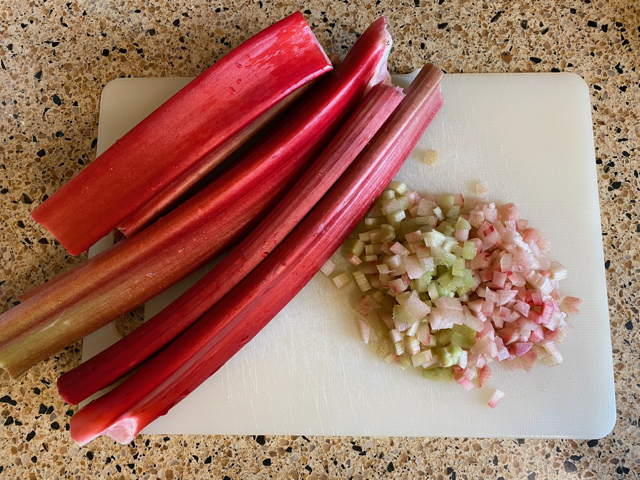
Rhubarb is versatile!
easy
Rhubarb has adapted well to the Canadian prairies, as evidenced by rhubarb patches in many gardens and farm yards. The versatility of rhubarb is enormous as it combines well with many other fruits as well as being a tasty ingredient on its own.
Pull rather than cut the stalks. Select those that are brightly colored and unblemished. Save the young tender ones for pies, sauces, crisps and other desserts. Use the more mature talks for jams, jellies and juices.
Six stalks will yield approximately 1 L (4 c) chopped or about 500 g (1 lb). It can be refrigerated, unwashed in plastic bags up to one week. Freeze or can for longer storage.
Freezing rhubarb:
- Wash, trim and cut into 2.5 cm (1 inch) pieces. Pack tightly into sterilized freezer containers, allowing headspace for expansion, or pack into freezer bags, removing all air. Store up to one year.
- If you are planning to make jams or jellies later on, freeze the quantity the recipe calls for, label as such, and date.
Rhubarb uses:
- Rhubarb blends particularly well with citrus fruits and berries. Add it to muffins, cakes, pies and crisps for delightful taste treats. It produces great jams and jellies, either alone or in combination with other fruits.
Rhubarb juice:
- Rhubarb juice mixed with ginger ale is a great thirst quencher for hot summer days. Combine 1.5 L (6 c) chopped rhubarb and 3 L (12 c) water in large saucepan. Bring to a boil, reduce heat and simmer about 10 minutes. Drain through a dampened jelly bag. Combine strained juice with 250 mL (1c) granulated sugar, and bring to a boil. Stir until sugar is dissolved. Refrigerate and use as a base for summertime coolers.

